What I Learned From Failing at Canelés for 6 Years
The pastry that humbles masters, breaks hearts, and rewards only the truly obsessed
Canele : Part 1
History, Ritual and My Personal Love Letter to a French Pastry
A deep dive into canelé—the pastry that humbles masters, breaks hearts, and rewards only the truly obsessed. The Madness Begins Picture this: A line cook in Phoenix, Arizona, sprinting between his apartment and a restaurant with a tray of molten-hot French pastries- all so guests could experience something most Americans have never heard of. That was me, years ago, completely consumed by canelé. Working at a restaurant without an oven. You can call it obsession or stupidity. I think it was both. And it was the most beautiful madness I've ever known.
While my colleagues were perfecting their knife cuts or memorizing wine pairings, I was having full-blown conversations with copper molds, cursing my oven, and staying up until 3 AM reading translated French pastry forums from 2003. I was baking canelé out of my home kitchen before service, coordinating the timing like a military operation, all so I could serve these little bronze cylinders to unsuspecting diners in the desert. The chef eventually bought me extra cooper molds—real copper ones that cost more than my monthly rent. He didn't have to. But I think he recognized something: the kind of beautiful insanity that separates good cooks from great ones. The willingness to go absolutely too far for something you believe in.
The Ghosts of Bordeaux Harbor
To understand why canelé breaks people, you need to understand where it comes from. This isn't just another French pastry—it's a 500-year-old testament to resourcefulness, tradition, and the kind of precision that borders on the spiritual. The story begins in 16th century Bordeaux, in the stone walls of the Couvent des Annonciades, where nuns would daily walk to the harbor docks to collect wheat that had fallen from ship holds and broken flour bags, along with rum and vanilla from tropical islands. The wine industry had another gift for these resourceful sisters: excess egg yolks, left over from the wine-making process where egg whites were used for clarification. With these humble ingredients—flour swept from dock floors, exotic spices from distant islands, and surplus egg yolks—the nuns created cakes that they generously offered to the poor of the city. What started as an act of charity became one of France's most technically demanding pastries.
The original pastries were called "canelat," fine cakes rolled around stems and fried in lard. The fluted shape disappeared for years when nuns were driven from their convents during the French Revolution, only to be revived later with rum quickly added to the recipe. The recipe slowly fell out of use until the 1980s, when it was revised and revamped by a handful of professionals. In 1985, a brotherhood emerged—the Confrérie du Canelé de Bordeaux—essentially 88 patissiers coming together to protect the recipe and solidify it as the property of Bordeaux. They even standardized the spelling: "canelé" with one 'n', not "cannelé." When French pastry chefs form a literal brotherhood to protect a recipe, you know you're dealing with something sacred.
Seven Ingredients, Infinite Humility
Here's what makes canelé both deceptively simple and devastatingly complex: seven ingredients. That's it. Flour, eggs, butter, sugar, rum, vanilla, milk. The same staples sitting in your kitchen right now. But simplicity is the cruelest master. With layered cakes, you can mask mistakes with decoration. Canelé offers no refuge. Every flaw is visible in the light, every shortcut betrayed by the crust. The technique demands everything: a three-day resting period for the batter, copper molds seasoned with beeswax, oven temperatures that would make most home bakers nervous, and the patience to wait for that perfect bronze shell to develop. You essentially mix up a batter a few days before you want them ready, let the batter rest in the fridge, then pour it into copper molds (after they've been seasoned with beeswax) and bake them until dark—very dark. This pastry taught me what obsession really means. Not the casual interest that flickers and fades, but the kind of consuming focus that rewrites your daily routine. I was setting alarms for batter checks, driving to bee keeper’s properties to ask for food-grade beeswax- the lady told me no one has asked for this in years. And yes, literally running between kitchens like some sort of pastry smuggler.
The Copper Standard
Let me address the elephant in the room: silicone molds. If you're thinking about making canelé in silicone, please don't. I'm not being precious or gatekeeping—I'm trying to save you from disappointment. Using silicone molds for canelé is like trying to paint the Sistine Chapel with crayons. Sure, you'll get something that resembles the original, but you'll miss everything that makes it transcendent. Copper molds are traditionally used in making French Canelés de Bordeaux and some people swear this is the only way to achieve the delicate fluted lines and crisp exterior of this pastry.
The copper isn't just traditional—it's functional and necessary. The material conducts heat in a way that creates that signature contrast: the caramelized, almost burnt exterior that gives way to a custard-like interior. Before using copper molds, you must season them by melting a thin layer of beeswax or beeswax-butter mixture, coating them evenly, much like seasoning a cast iron pan.
This isn't just about tools—it's about respect. Respect for the tradition, for the nuns who created this centuries ago, for the French bakers whose techniques we're trying to honor. When you use proper copper molds, you're not just baking; you're participating in a conversation that's been going on for 500 years.
I've collected molds from France, and Japan. Each one bakes differently. Each one tells a different story. My friend H.WOO brought me Japanese copper molds that cost almost nothing compared to their French counterparts, but they're uniquely shaped and create their own beautiful variations.
The Great Teachers
My breakthrough didn't come from YouTube tutorials or Instagram reels. This was before the pandemic flood of cooking content, when finding real technique meant digging deeper. I became an archaeological researcher of pastry knowledge.
I listened to an old podcast episode with Kris Harvey—a canelé master and chocolatier who waited five years before selling his first one commercially. He would tell stories about not letting guests take canelé to-go; they had to eat them in the restaurant before leaving. That intensity, that understanding of the pastry's five-hour lifespan, spoke to something in me. My real game-changer was discovering Toothache Magazine, a pastry-focused publication by Nick Muncy, a pastry chef who had worked throughout San Francisco and LA. This wasn't just a magazine—it was a masterclass in print form.
One issue contained a canelé deep-dive where Muncy tested what felt like dozens of variations: changing flours, milk temperatures, fat ratios, resting times, rum timing. As a visual person, seeing those side-by-side experiments, understanding how each variable created ripple effects—that's when I started to truly understand this pastry.
I also haunted library archives, finding old French pastry books and having sections translated. There was this French guy I'd run into at the wine shop by my apartment—the kind of character I would only run into around town on a weekly basis. One day I worked up the courage to ask him to translate some scripts for me. They contained techniques about applying beeswax and batter resting times that I just needed clarity on. Funny thing is, I never saw him again after that. Like a video game character that disappears after the side-quest
The Moment of Recognition
The validation came unexpectedly during the season when I was regularly serving canelé at Restaurant Progress. This was right before lockdown in 2020, and it had become this beautiful ritual—I'd offer them to guests at the end of tasting menus or when someone ordered exceptional wine. That particular evening, a four-top was dining with us, and there was something special about their energy. One of my best friend’s Sid- was their server that night. He told me one of them was a pastry chef, so I knew I had too send my last four to their table. When Sid dropped the Canele off- I watched their faces change through the window in the kitchen. Complete shock.
The pastry chef told me on their way out my canelé were comparable to anything in France—maybe better than what he made. He confessed he didn't even use copper molds and felt "like he was cheating." To challenge someone from Bordeaux, in Phoenix of all places, with a pastry that belongs to their homeland—that was everything. This isn’t about ego. It’s about proof that obsession, when channeled correctly, can transport you beyond your circumstances.
A line cook in the desert could honor a 500-year-old tradition and do it justice.
The Ritual of Perfection
Making canelé properly is a three-day commitment.
Day one: mix the batter and begin the waiting.
Day two: patience and faith that chemistry is working in your refrigerator.
Day three: the ritual begins. The process requires precise measurement, attention to process, and arguably the most important factor: careful oven management. You season your molds with beeswax until they gleam like jewelry (but not too much)
You preheat your oven hotter than most recipes would dare suggest. You pour the batter precisely on a scale to 75 grams. Then you wait. And watch. The smell changes as they bake—first like custard, then like caramel, finally like something almost burnt but not quite. You're looking for that deep bronze color that makes most bakers nervous. Too light, and you've made expensive pudding cups. Too dark, and you've made very pretty charcoal. When they're perfect—and you know immediately when they are—they pop from the molds with a satisfying release (WE HOPE). The exterior is blistered and bronze, the interior soft and custardy with a beautiful crumb. The ridges are sharp enough to cut your finger. They taste like rum and vanilla and something indefinable that might just be time itself- thats the beeswax. You’ve never tasted it before it’s unique.
Why It Matters
I've been making canelé since 2019. It's 2025 now, and I'm still not perfect at it. That's not a failing—that's the point. Like bread, you don't master canelé; you develop a relationship with it. Each batch teaches you something new about patience, technique, or simply how to pay attention. This pastry showed me what I was capable of accomplishing. It taught me that going too far for something you believe in isn't crazy—it's necessary. It's how you find the edge of your abilities and then push past it. Most of the places where I first tasted canelé are gone now.
Babette's Bakery- which moved from Denver's RiNo district to Longmont outside the city, where I would trade steaks for canelé-immedeiatly go outside smoke a joint come back and eat them crouched behind the butcher counter during my shift
KONBI in LA- where I'd drive from Phoenix just for their egg salad sandwiches and leave with a box of canelé.
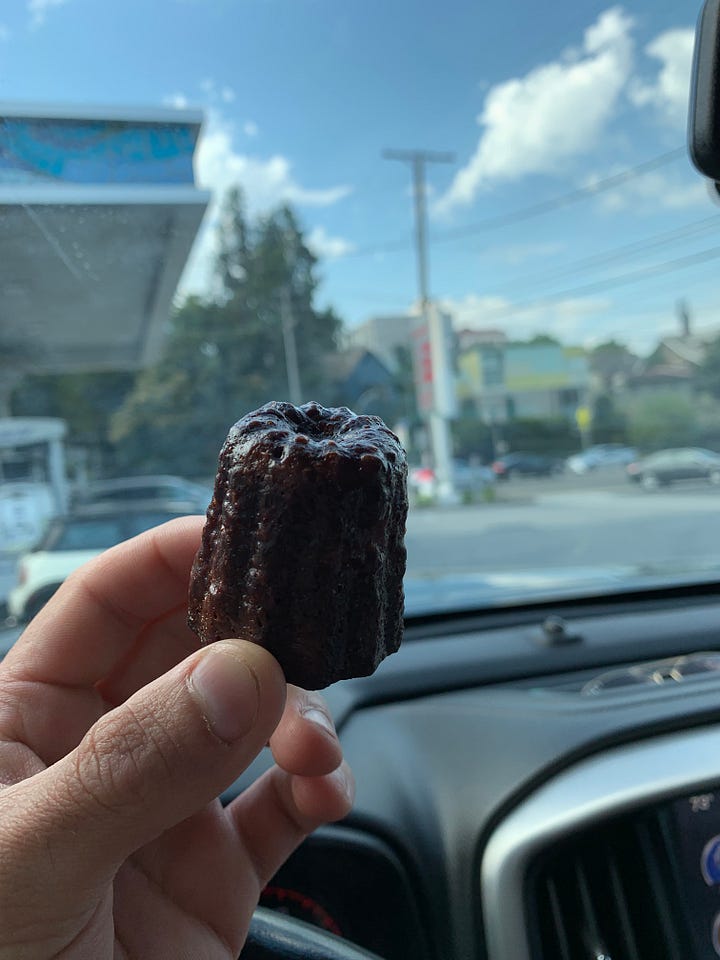
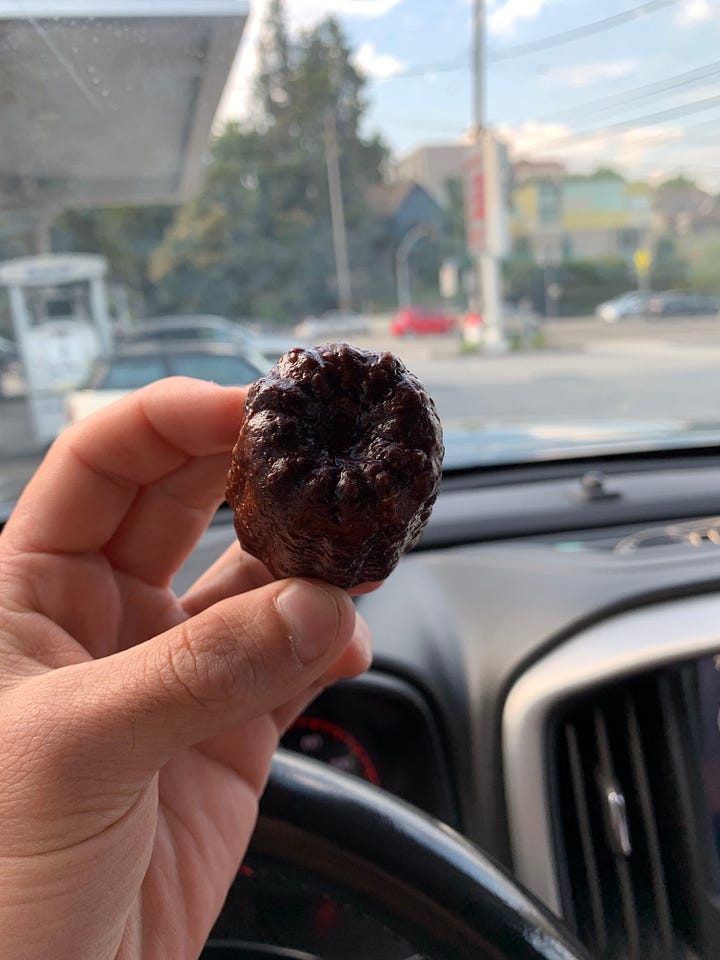

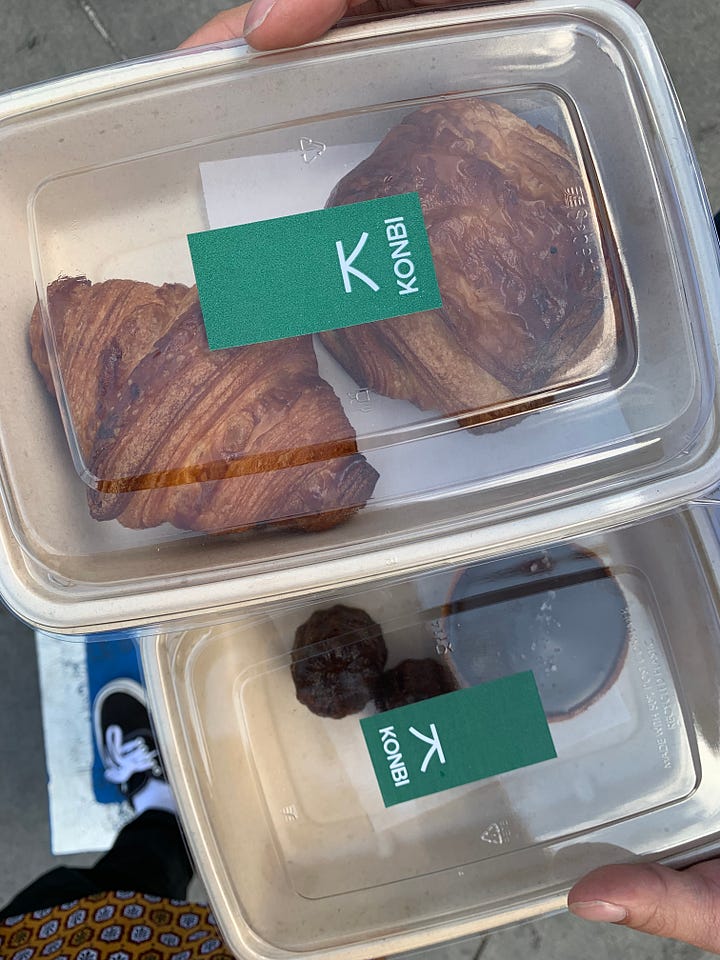
Nathas of La Belle Vie- the French baker I met at Gilbert Farmers Market who eventually switched to silicone molds because it was easier.
When the places that honor these traditions disappear, the knowledge becomes precious. Learning to make canelé isn't just about pastry—it's about preservation. It's about keeping conversations alive that stretch back centuries.
This last fall I took a trip to Vancouver and had an exceptional Canele experience there
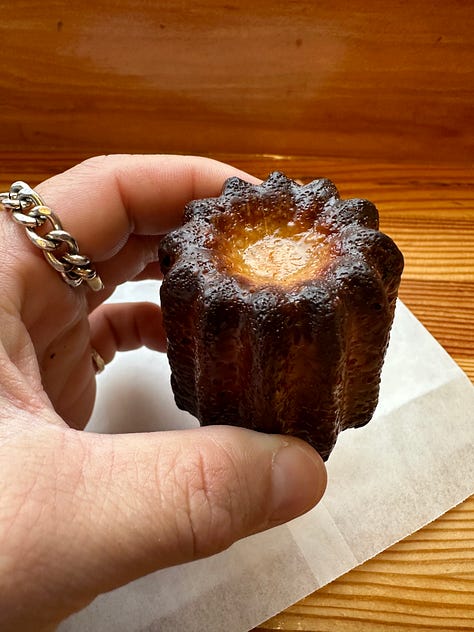
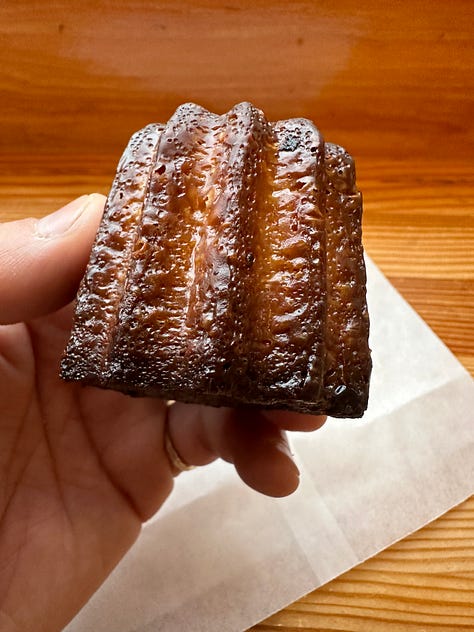
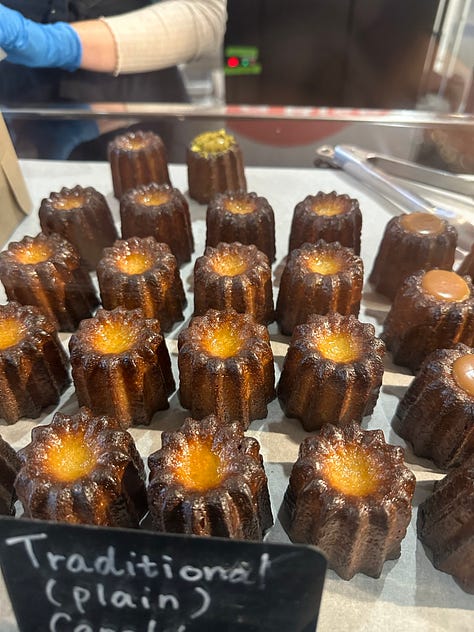
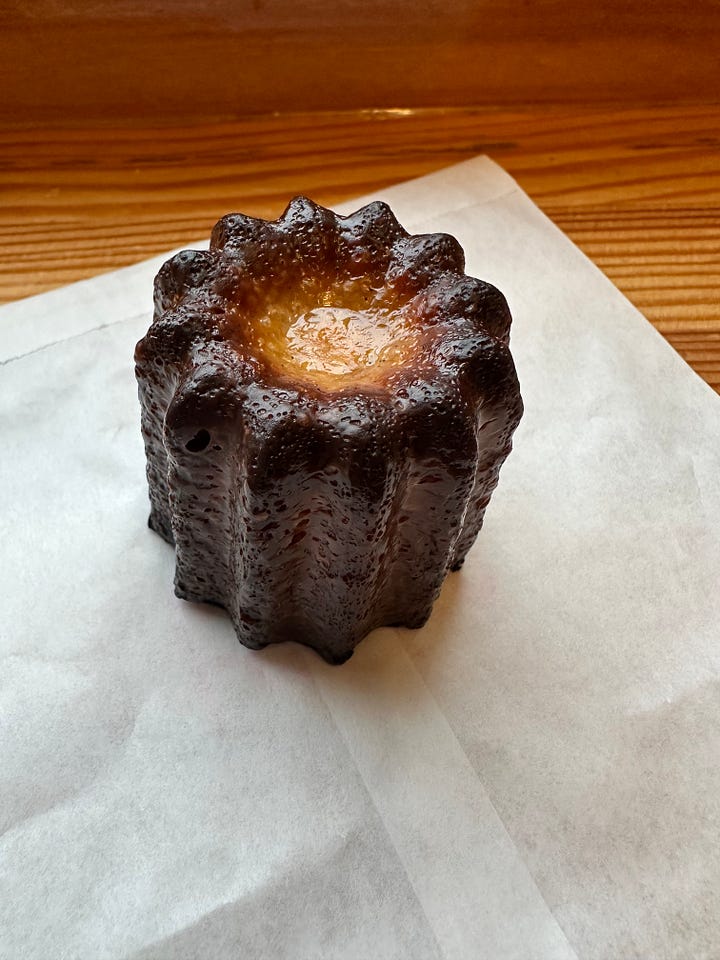
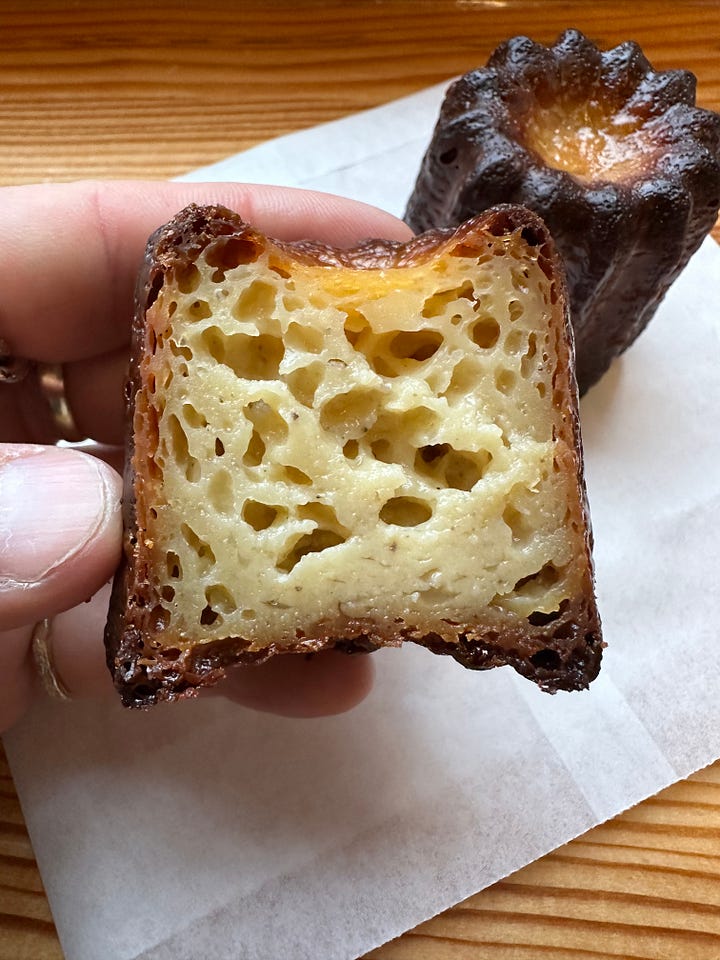
Read about that Trip here
The Beautiful Madness
You might read this and think I'm intense about a pastry. You'd be right. But I think we need more of that intensity. More people willing to go absolutely too far for something they care about. More beautiful, stupid decisions that turn into transcendent moments. Canelé will humble you. It will make you question your technique, your patience, your commitment to excellence. It will force you to slow down in a world that celebrates speed. It will demand that you care about details that most people will never notice. But when you get it right—when that first perfect canelé emerges from its copper mold, bronze and beautiful and still warm—you'll understand why I became obsessed. You'll taste 500 years of tradition in seven simple ingredients. You'll feel connected to nuns in Bordeaux harbor and to every baker who has cursed their oven while waiting for that perfect bronze shell. And maybe, just maybe, you'll find yourself planning your own beautiful madness. Your own three-day commitment. Your own sprint across town with a tray of molten pastries, desperate to share something perfect with the world.
The best things in life are worth going too far for. Canelé taught me that. What’s the deepest dive for a recipe you’ve gone?
Next up: the recipe, the techniques, and all the little variables that make or break a canelé.
Why does one develop that signature cul blanc while another doesn’t?
What happens when you swap out the flour, change the fat content, or mess with the mold?
In the next post, I’ll break it all down—with video tutorials, test bakes, photos of different molds (including a Japanese one I love), and a deep dive into the science behind what’s actually happening inside a copper mold.
If you’re a paying subscriber, you’ll get the full breakdown, plus recipe variations, video notes, and side-by-side comparisons.
Because why we do something is just as important as how we do it.
PART 2: THE RECIPE
How to make Canele without losing your mind
PART 2. I ADDED 4 DIFFERENT CANELE RECIPES. A FEW VIDEOS EXAMPLES ALONG WITH A TROUBLE SHOOTING GUIDE.
IF YOU LIKED THIS
Check These Out-
Bacon, Tomato, Polenta
Stick to the ribs, big smooch and wiping the lipstick off your cheek because this one feels like it came from someone’s grandma. Some solid bits of cooking, nothing too crazy baby.
Sausage, Charred Cabbage & Mustard Gravy (FREE)
A classique- I love simple food that is approachable. I want meals that makes you warm on the inside, like someone loves you. Solid technique, balanced flavors and for me that ratatouille moment. A o…










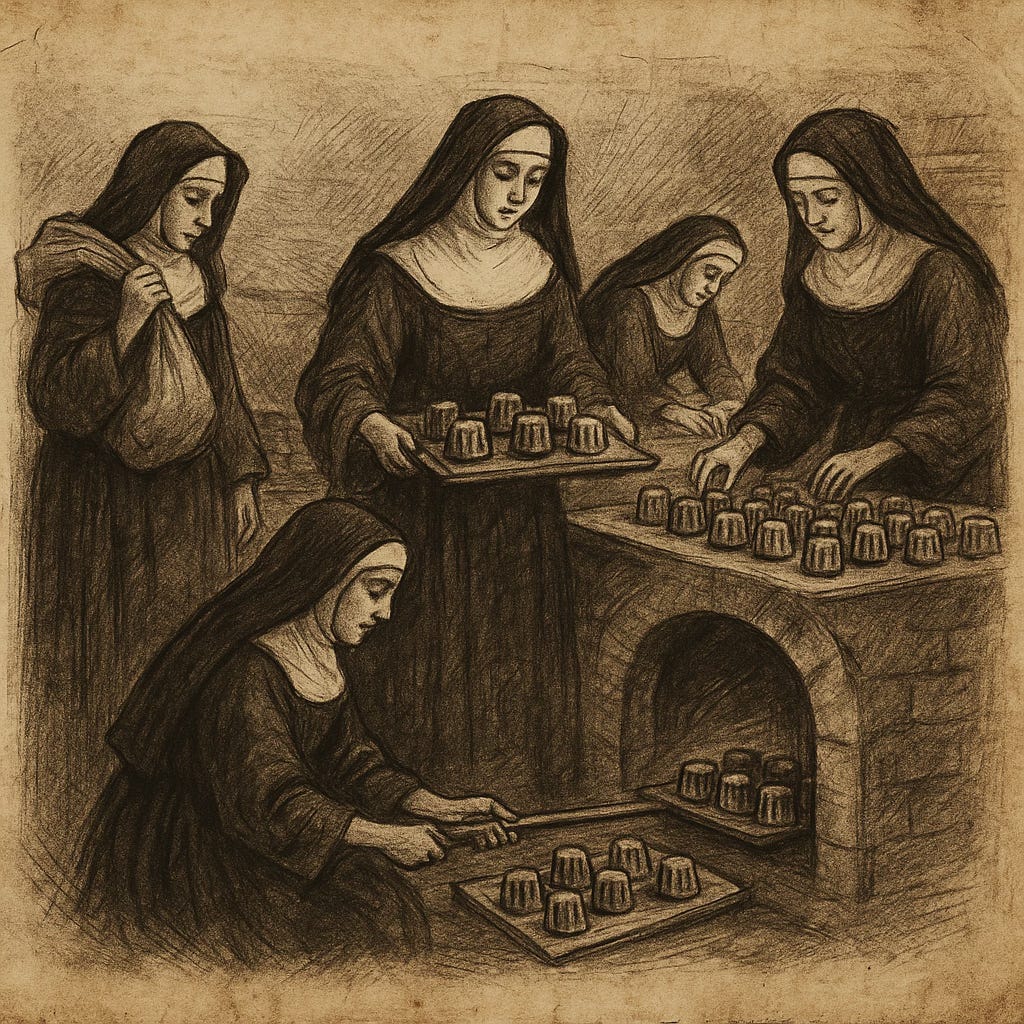













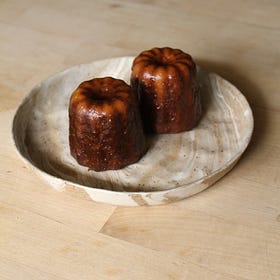

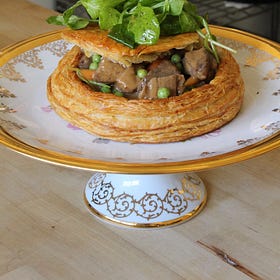
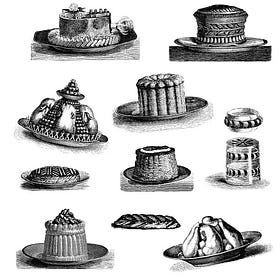
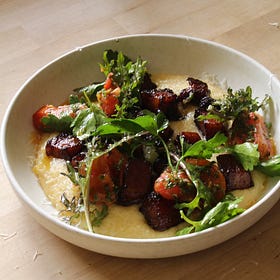
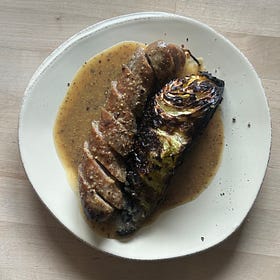
I’m obviously NOT a pastry chef or a chef. I have about a million questions.
Where do you get your beeswax? Would you pay for the Matfer or Mauviel or is the cheaper Patisse set okay? ✅
I have been blessed, and cursed, to have Caneles in Bordeaux as my first introduction. Chasing an even mediocre one in the US seems futile. Your mention of the silicone vs. copper molds is likely at play for the majority of the pale beige versions I have run across. IMO the willingness to push the envelope in the darkness scale is the key and, like many other pastries in the US, many bakers seem reluctant to go as far as they do in France. Maybe it is for fear that US customers will worry they look "burnt"?